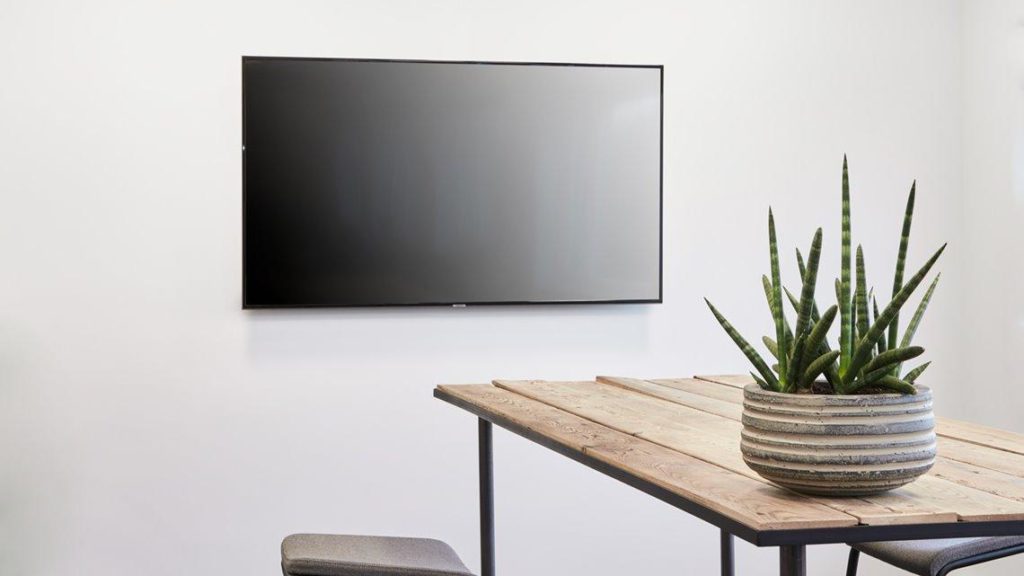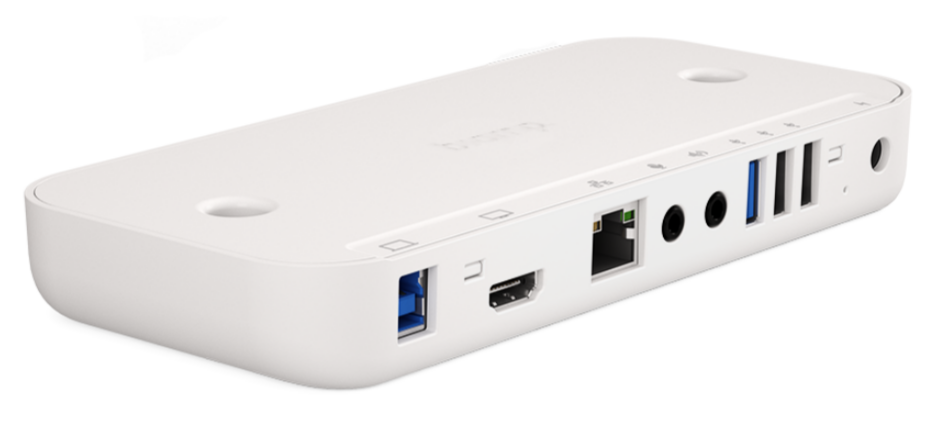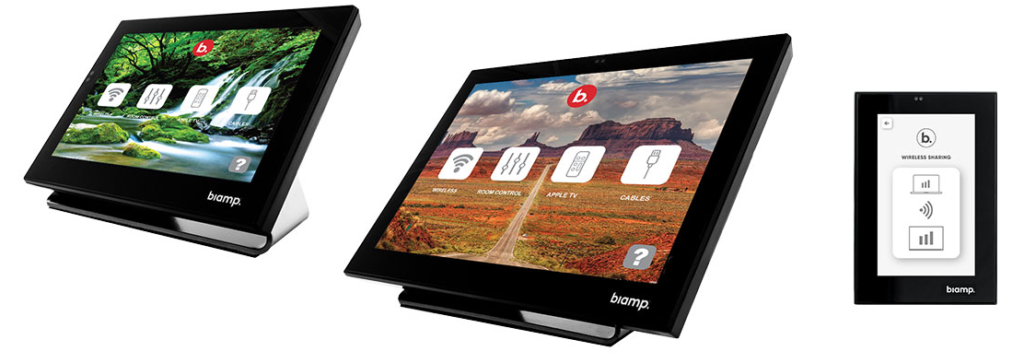What is a huddle room?
Huddle rooms are growing in popularity as workplace design puts increased focus on teamwork, collaboration, and agile ways of working. In corporate environments, a “huddle” is a short, informal meeting with a few team members to catch up and have quick discussions. Discussions in a huddle room could include reviewing the progress of a project, prioritizing to-do lists, providing important updates, or delegating tasks. People should leave their huddles feeling energized and focused.
A huddle room is a space designed and equipped to help the users get the most out of the space and have productive meetings. Today, huddles can have a mix of employees that are present physically and remotely. Therefore, a modern huddle room should be equipped with a mix of presentation and video conferencing tools.
Equipment for huddle rooms
Display
A display is an essential tool for presenting content or having a group video call. The display can be a standard version or an interactive one. The advantages of an interactive display are:
- Increased user engagement when interacting with the content
- Real-time collaboration on content by meeting attendees
- Improved learning and information retention as the display caters to different learning styles
How do you choose the right display?
The display market offers a mind-boggling range of manufacturers, models, features, and sizes. While choosing what features you want your display to have depends largely on the type of company, the company culture around collaboration, and the budget, there are some rules of thumb to follow when choosing the size for your display.
For rooms where the distance to the farthest viewer is fewer than 10 feet (~8 meters), a 55” display is a suitable size. Another thing to consider when designing ergonomic meeting rooms is to avoid unnecessary eye strain. Another rule of thumb here is that the closest viewer should sit no closer to the screen than the width of the screen. In this case, the closest person to the screen should sit at least 55” or 1.4 meters away from it.

Video and audio for remote collaborations
As mentioned previously, huddle rooms can be used for “offline” meetings where all the participants are physically present in the room, or for online meetings where one or more participants are attending remotely. The huddle room needs the right equipment to ensure everybody is seen and heard clearly.
Connections
Wired vs. wireless connectivity
Any type of collaboration space requires users to connect – to the AV system, to the network, and to any applications to be used in the meeting. The choice of selecting a wired or wireless connectivity solution depends on several factors:
- The company’s IT infrastructure
- The company’s policy regarding network security and BYOD
- The huddle room users (internal or guests)
- Budget
While wireless solutions can provide users with a more seamless experience when interacting in the huddle room, connectivity issues come up. Every meeting room should have at least one wired solution as a back-up in case users are somehow unable to connect. A wired solution could be as simple as an HDMI cable connected to the display.
However, in spaces where the equipment setup is more than just a display, the user has to connect to multiple devices to collaborate. This is when a system hub or a control system can prove useful.

Control systems
A touchscreen or keypad control system is a smart solution for adding automation to your huddle room. The control system connects and controls the equipment in the room, while the interface is a simple and intuitive point of interaction for the user.
Meeting rooms can be automated in several ways. The control system can be configured to turn all the equipment off automatically at a specific time (scheduled shutdowns) or after a period of inactivity.

Cable management
Cable management is not just a question of aesthetics, it’s a question of health and safety in the workplace. Several meters of cable dangling from the equipment and trailing all over the floor is unsightly, diminishes the opportunity to clean the space properly, and is a possible tripping hazard. There are several cable management options to tidy up the meeting room, protect the equipment, and make it easy for users to connect.
